Fries, rocky mountain oysters, eggs, cowboy oysters, balls, or gonads, whatever you call them, the technical name is testicles, and if you're here, you're probably looking for a way to eat them. Congratulations, because this is hands-down the best recipe for rocky mountain oysters I've ever had--and I've eaten plenty.
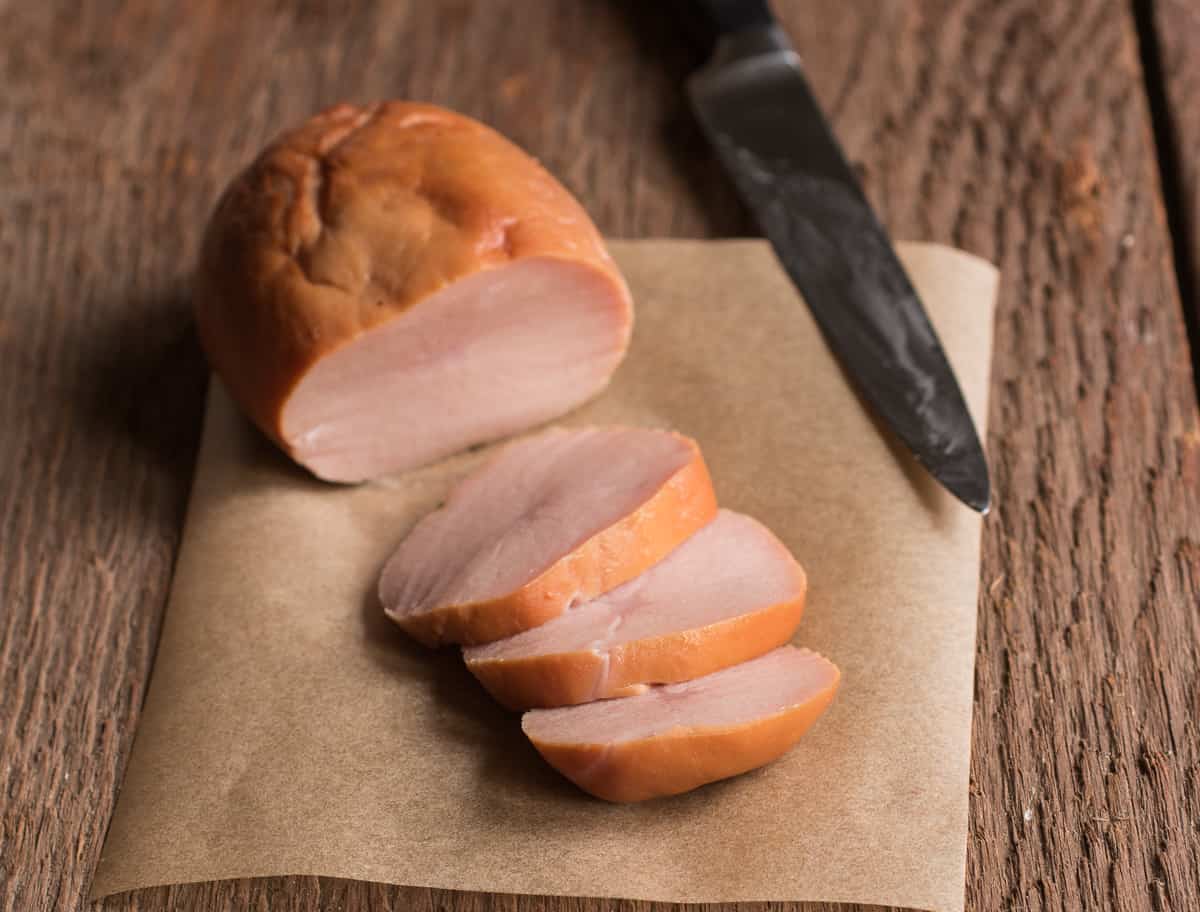
The first ones I had were from wild boar, and they turned me off for years. All that changed a few years ago when I started working with a lamb and goat farm as a consultant.
One of the things I help out with, is finding interesting things they can do with offal--selling as a value added product, as with rendered caul fat, or coming up with interesting recipes like scrapple, that are not only efficient ways to use up odd parts of an animal no one appreciates anymore, but also taste good.
Testicles were probably my biggest challenge though. Aside from struggling with the cleaning technique there was the taste.
Beef or pork testicles are one thing, lamb testicles are another thing entirely--they're very strong tasting, and the first few things I made with them were a little too much, even for me. That was, until I remembered my favorite gamey meat trick--brining.
Brining offal is pure charcuterie magic, and can transform everything from kidneys, brains, sweetbreads, livers and balls into something completely new, and near-unrecognizable.
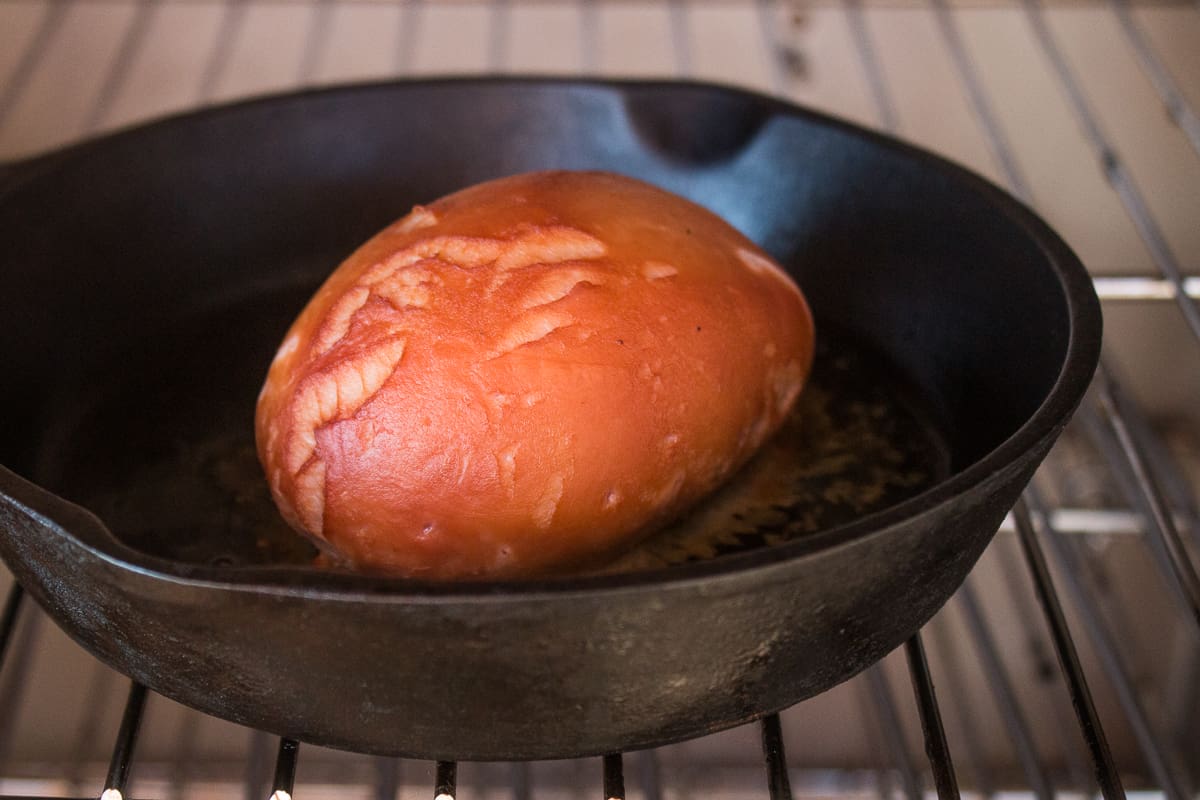
Once the testicles are brined, they get a quick blanch and peel, then they're off to the smoker for a gentle cook for an hour and a half, just enough to burnish them a bit from the smoke and give them some good color.
The result, compared to un-brined testicles (yes I tried) is remarkable, and really worth trying out if you're the kind of person or nose-to-tail chef that experiments with offal cookery, as a good meat eater should.
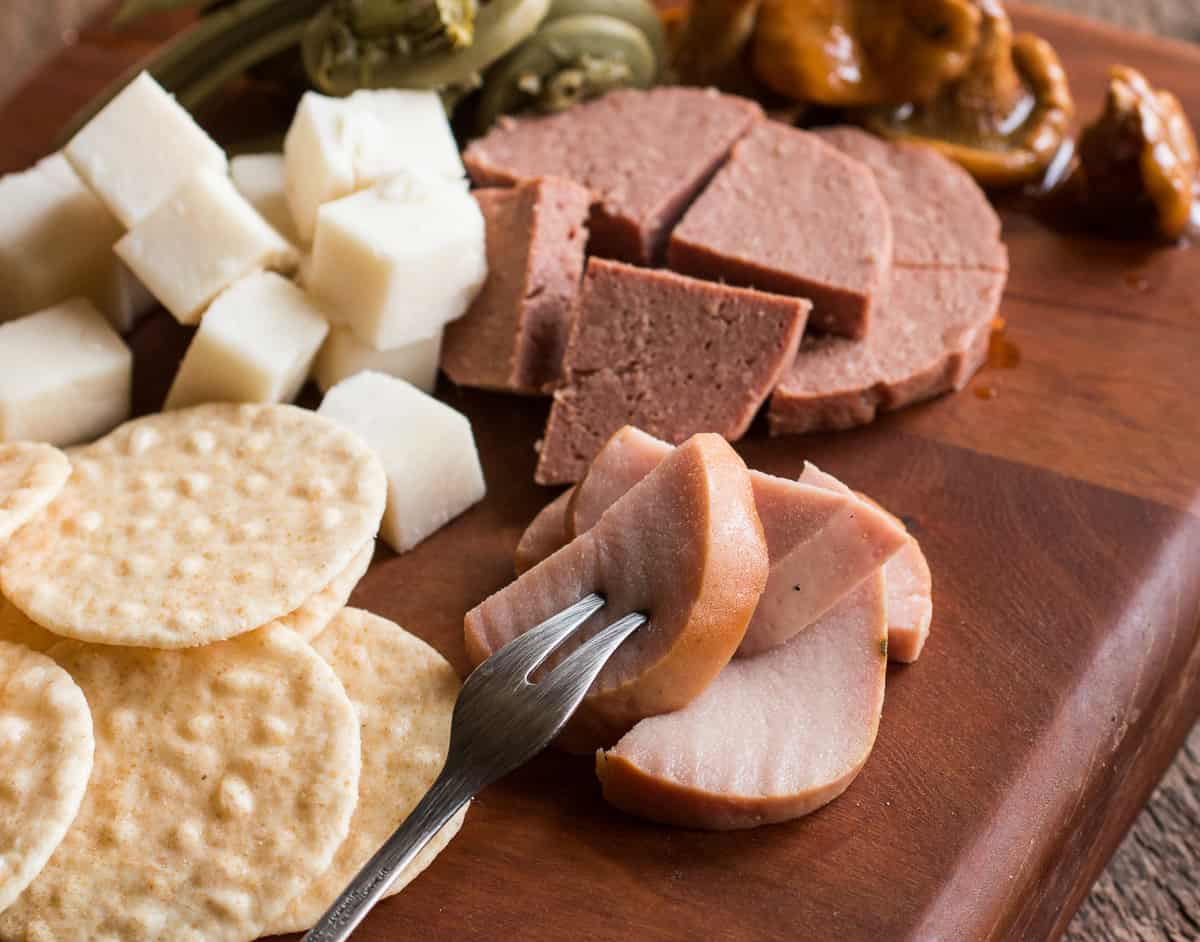
Seriously, though. These smoked man meats are so mild compared to their original form, that I'd wager you could feed them to just about anyone on a charcuterie platter, cheese plate, sandwich, or whatever else you can come up with.
I bet most people won't blink an eye, unless you tell them what they're eating. If you give them a shot, I'd love to hear about it.
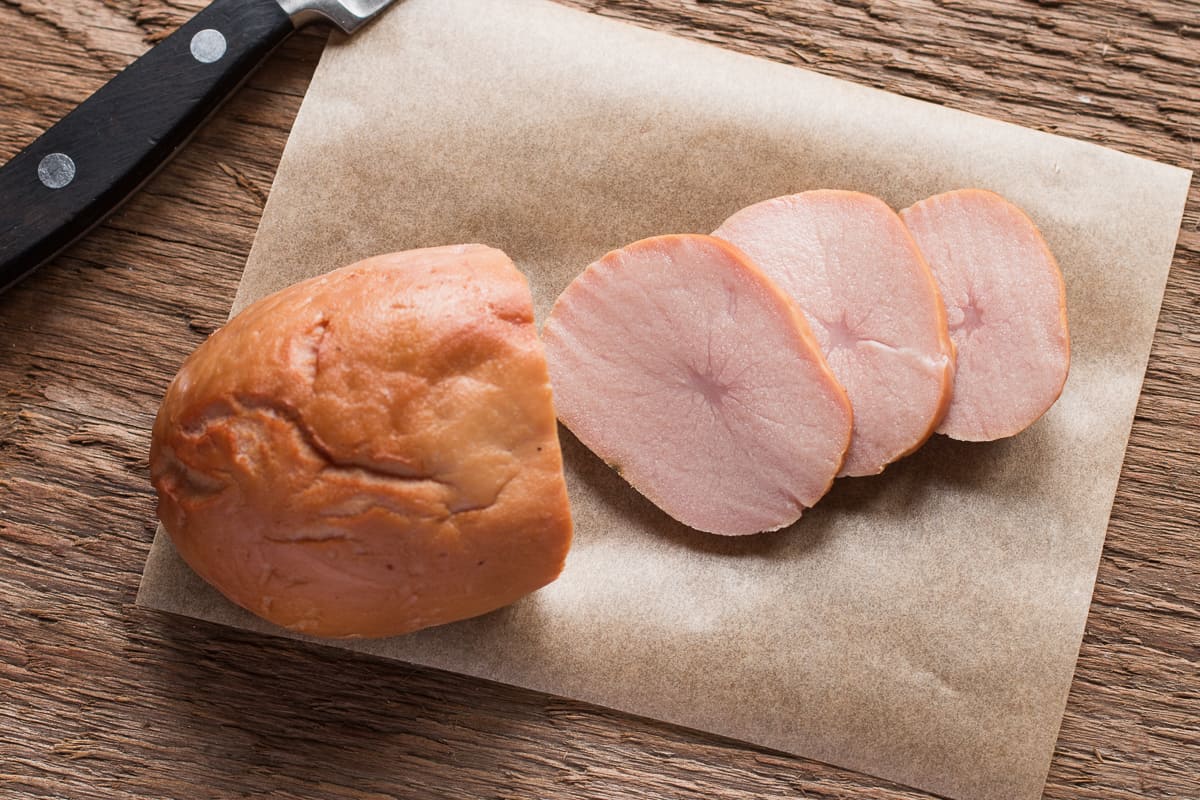
Smoked Rocky Mountain Oysters (Testicles)
Equipment
- Smoker
- Courage
Ingredients
- Testicles as fresh as possible (frozen is fine too)
- 1 quart water
- 90 grams salt roughly a heaping ⅓ cup
- 10.5 grams roughly 2 teaspoons pink curing salt (sodium nitrite)
- 2 Tablespoon pickling spice
- 2 cups dark brown sugar
- 2 dried bay leaves
Instructions
- Combine the water, salt, pickling spice, brown sugar, bay leaves and pink salt and bring to a boil to dissolve. Chill the brine. Trim the testicles of their outer sheath if attached (you may or may not have to, depending on your supplier).
- Put the testicles in the brine, ensuring they're completely covered, then refrigerate.
- After 4 days, bring a pot of water to a simmer, turn off the heat, add the testicles and allow to sit in the hot water for 10 minutes for small testicles like from lamb or deer, or 15 minutes for beef, then remove and chill in cold water. The idea here is to gently cook them so you can remove the membrane, but not with so much heat that it bursts, which ruins the attractive egg shape.
- Remove the testicles from the water, dry with a paper towel, then, using a sharp paring knife, carefully remove the inner membrane to reveal the inner meat. It will be soft and flubbery. If you have time, allow the peeled testicle(s) to sit uncovered in the fridge for a few hours or overnight before smoking, to help for a nice smoky skin, or pellicle.
- Transfer the testicles to a pan, put in the smoker, and smoke the testicles at 225 degrees until an internal temperature of 145-150F, and no higher. This is roughly 1.5 hours. Then chill, uncovered, to form a pellicle.
- The smoked “oysters” are now ready to serve, and will keep refrigerated for 4 days. Serve with crackers, mustard, pickles and cold cuts.
Notes
If you really want to go the extra mile, try this. Add a few crushed herbs, a dried bay leaf or two, and a smashed clove of garlic, some hot chili, or other seasonings to some oil--enough to cover the testicles. It doesn't have to be fancy oil, whatever you have is fine. heat the oil and aromatics until simmering, then chill completely. Slice the smoked testicles ¼ inch or so thick, then pour the cooled, aromatic oil over them and let them sit for another day. Excellent on a sandwich. Smoked and fried If you like fried rocky mountain oysters, you're in luck. Since the testicles are naturally, err, juicy, they keep a really moist texture and can be breaded and fried after smoking. Now say smoked fried balls five times fast. Scaling for large batch testicle cooking This is a small amount of brine, adjust as needed.

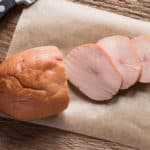
Cheeky
I can't wait to try. We just got 8 pigs and the boys are already messing with their sisters so this may be there future real soon!
Alan Bergo
Have fun.
Yorg Aye
I love warm balls in my mouth😫😍😈
haimish mackinnon
ME TOOO!!!!!
Jessie
Well written! My family and I butcher a lot of our own meat (pig, poultry, goats, rabbit, wild game). We are big believers in not wasting any food. I was raised this way, and also a career chef. When we process our own meat it's quite the ordeal.
I process pork slightly differently also than probably most butchers. By different, I refer more to the aging of the meat, not the cuts of meat. My method is simple and always yields superior results.
I start with the animal hoisted on the gambrel I wash it very well on the outside while it's bleeding out from the neck very soon after it has been killed. From there I open the cavity of the animal and remove all ofal. This all goes into a large cooler with lots of ice to start cooking down. The rest of the animal gets butchered while hanging, each cut also goes into other coolers with lots of ice. Once all primal cuts are made and are in ice, I start processing primal cuts into secondary cuts (chops, sirloins, butts, etc.) These cuts then all go back into the ice bath. Guts are next, seperate each organ, clean it from connective tissue etc. And back into a clean ice bath.
Once all cutting is done, I start the aging process. I age EVERYTHING from the animal in these ice baths that have salt added to the water for about a week. Check the ice several times a day, draining water, adding ice.
The only part that doesn't get aged is the head. I remove the jowels for curing (skin on) and the ears for dog treats. The rest of the head goes into a large pot and immediately gets cooked for head cheese.
Any remaining bones (neck, hips, spine) immediately go on the smoker with salt/sugar rub to be used for soups/stews/beans later in the year. The trotters get smoked raw with no seasoning to be used later ti make either scrapple or pickled.
All organs get used the only "unusable" parts are usually connective tissues. These all get cooked with a bit of fat in a good broth. I then stain then out, out then in a did processor and use it for dog treats.
Last weekend we processed 2 pigs, 400 pound male and a 500 pound sow. Enjoying the smoked oysters this morning with ice coffee. Life is good.
Alan Bergo
Thanks for this great comment, and sharing your experience Jessie.
J.E.Hoover
The FBI would like to speak with you
Forrest
I got young bull testicles. I was wondering how long to brine them. Can you over brine them?
Alan Bergo
You can over brine them, but since you’ll be slicing them thin you have some wiggle room here. With young oysters I would start with 24 hours, and up to 48 hours in the brine.
Drew
Sounds like a fairly straight forward easy recipe. I'm going to try it. Any tips on making sure it isn't over cooked? what internal temp is good to shoot for with testicles?
Also I was just curious your thoughts on this. I live in Upper Peninsula of Michigan not too far from you. I've followed you for a few years now. I was just wondering what your alternative to pickling spice would be if you had no access to it? I love pickling spice don't get me wrong but I just like to challenge myself in just using what I can grow or forage here for herbs and spices. I mean other than salt and peppercorns although I''m going to grow a small peppercorn tree in my house soon. The tiny variety that's indeterminate.
I basically grow myself lots of basil, dill, lovage, cilantro, culantro, greek oregano, thyme, sage, and lots of peppers, and a years supply of garlic and shallots. I also gather wild mustard seeds and store the seed or make prepared mustard out of them. I'm just curious using your experience what kind of brine would you make choosing from that assortment.
The final frontier for me is trying to get ginger to grow properly in my unheated greenhouse/glorified cold frame and also want to see if I could make traditional fermented fish sauce using smelt or something from the Lake superior and tributaries. Thanks for your time and any input Alan. I love your creativity. I approach things very similar but you've helped me a lot since you've obviously had a lot of experimentation with restaurant and foraging too. Cheers my friend.
Alan Bergo
Hey Drew, yes this is super easy. I can't believe I didn't put a target temperature in there, that was pretty silly of me. You're looking to hit 145F-150F.
Lucy
I live in GA. I don't know where to get them here. Any place I can order them?
Alan Bergo
You can order lamb fries from http://www.shepherdsongfarm.com which is where I get mine.
Forrest Ludwig
They were a bit dry
Alan Bergo
Sizes of testicles can vary. Don’t overcook them.
Bobbie Hilligoss
The Buckhorn Exchange in Denver, CO is by far the best place to try Rocky Mountain Oysters. I also had the best ribeye steak there. Excelllent food, wine and atmosphere. Can’t wait to visit Denver again.
Hazen Weber
Delicious. My mother in law had no idea and I couldn't stop grinning through the meal.
Alan Bergo
Oh does that me happy. Clean plate club 🙂